Abstract
Rotter, Joan (University of Oklahoma Medical Center, Oklahoma City), and Florene C. Kelly. Serological reactions associated with the clumping factor of Staphylococcus aureus. J. Bacteriol. 91:588–594. 1966.—Evidence that the substance which causes staphylococci to clump in the presence of fibrinogen (clumping factor) is antigenically similar in strains which are serologically diverse according to agglutination reactions has been obtained from fibrinogen-cell clumping inhibition tests. Antisera for clumping factor (CF)-positive strains inhibited the clumping reaction of all strains tested. After adsorption with homologous cells or with cells of other CF-positive strains, the antisera no longer inhibited clumping. When antisera were adsorbed with trypsin-treated, CF-positive cells, or with cells of CF-negative mutants, the ability to inhibit the clumping reaction persisted. Antibody to CF activity was not associated with coagulase. Latex coated with extracts derived from the cells of five CF-positive and six CF-negative strains was, in each instance, agglutinated by sera from rabbits immunized with CF-positive cells. After adsorption with trypsinized, CF-positive cells, antisera still agglutinated latex which had been treated with the CF-positive extracts, but not with the CF-negative extracts. Similar results were obtained after antisera were adsorbed with the cells of CF-negative mutants. Cell agglutination titers of sera from rabbits immunized with CF-negative staphylococci were significantly lower than those produced in response to CF-positive cells, regardless of their coagulase activity. If the CF-inhibiting antibody also functions as an agglutinin, it apparently is not solely responsible for this difference.
Full text
PDF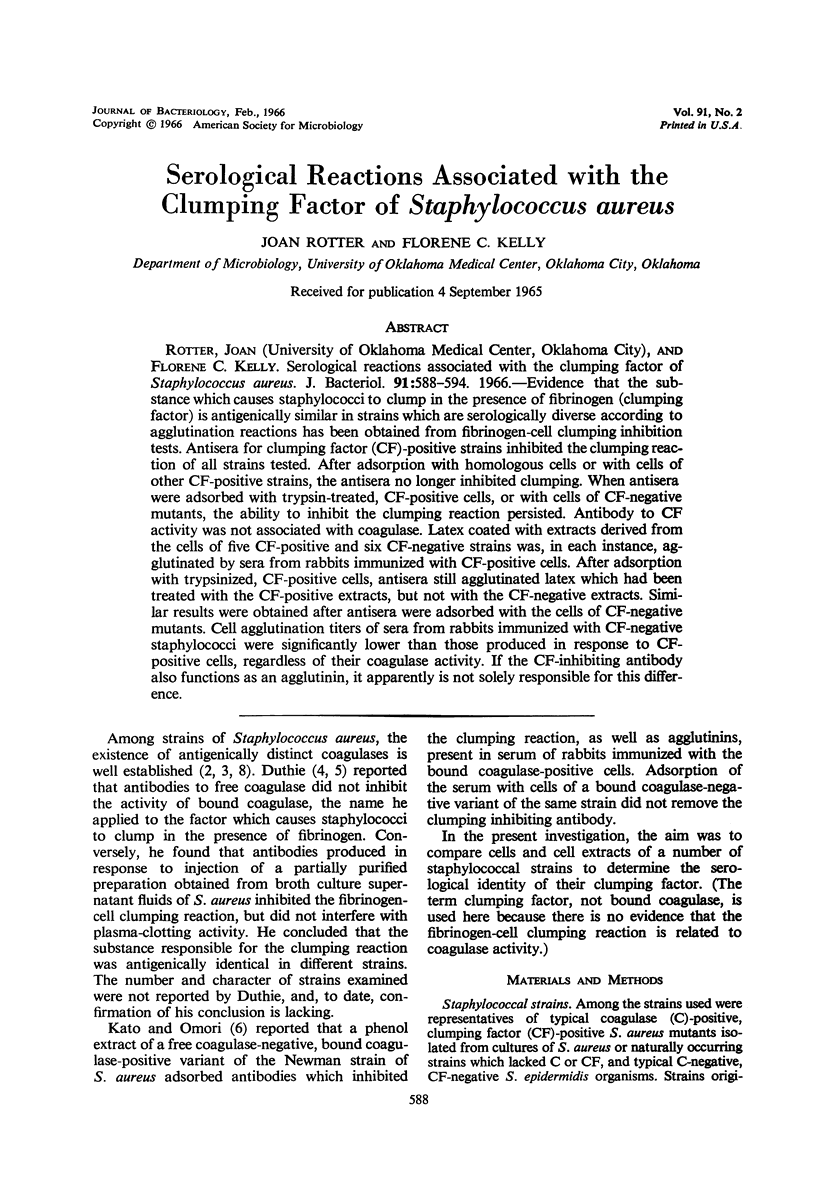
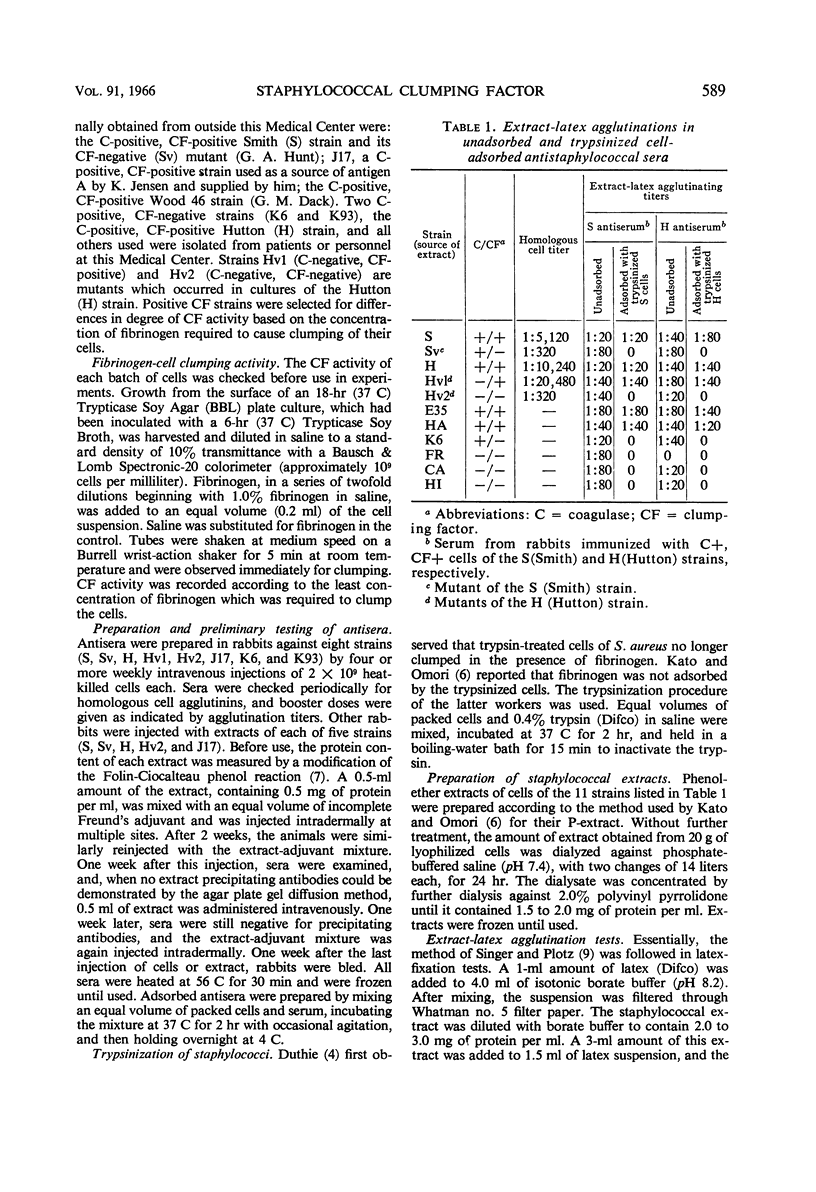
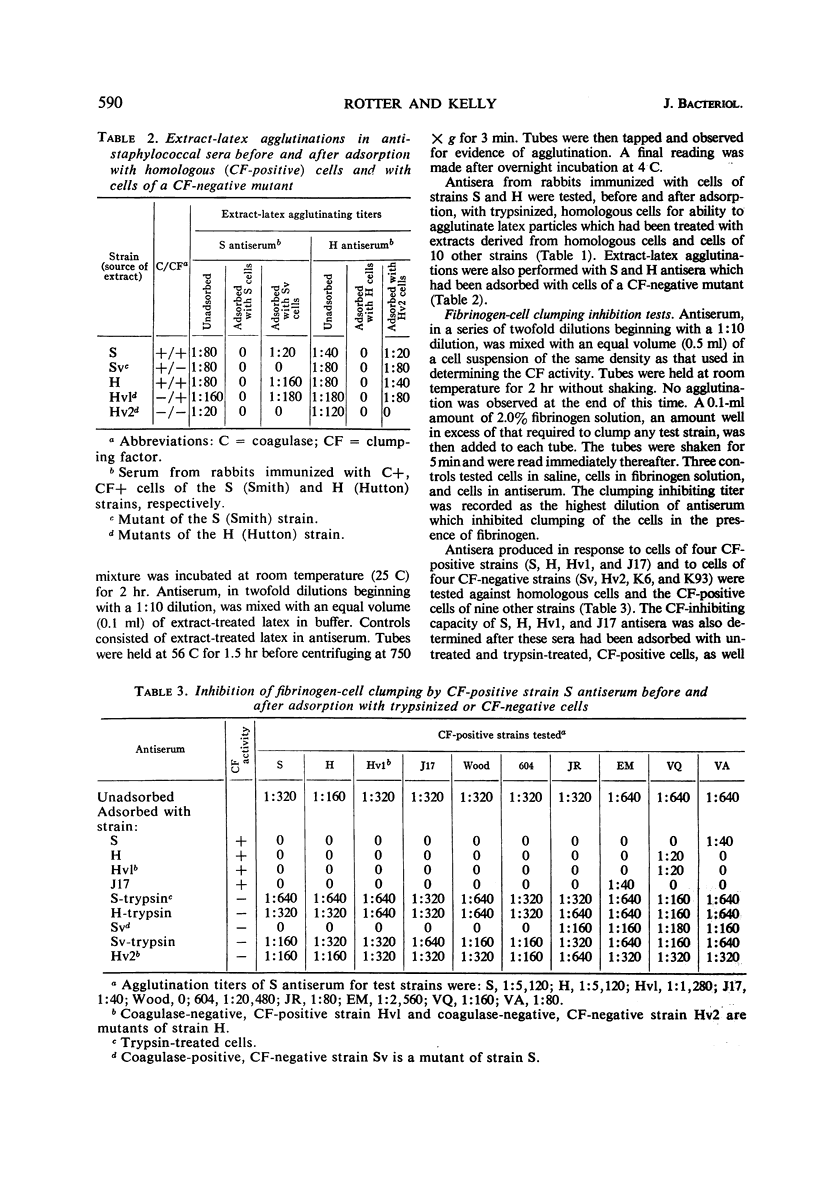
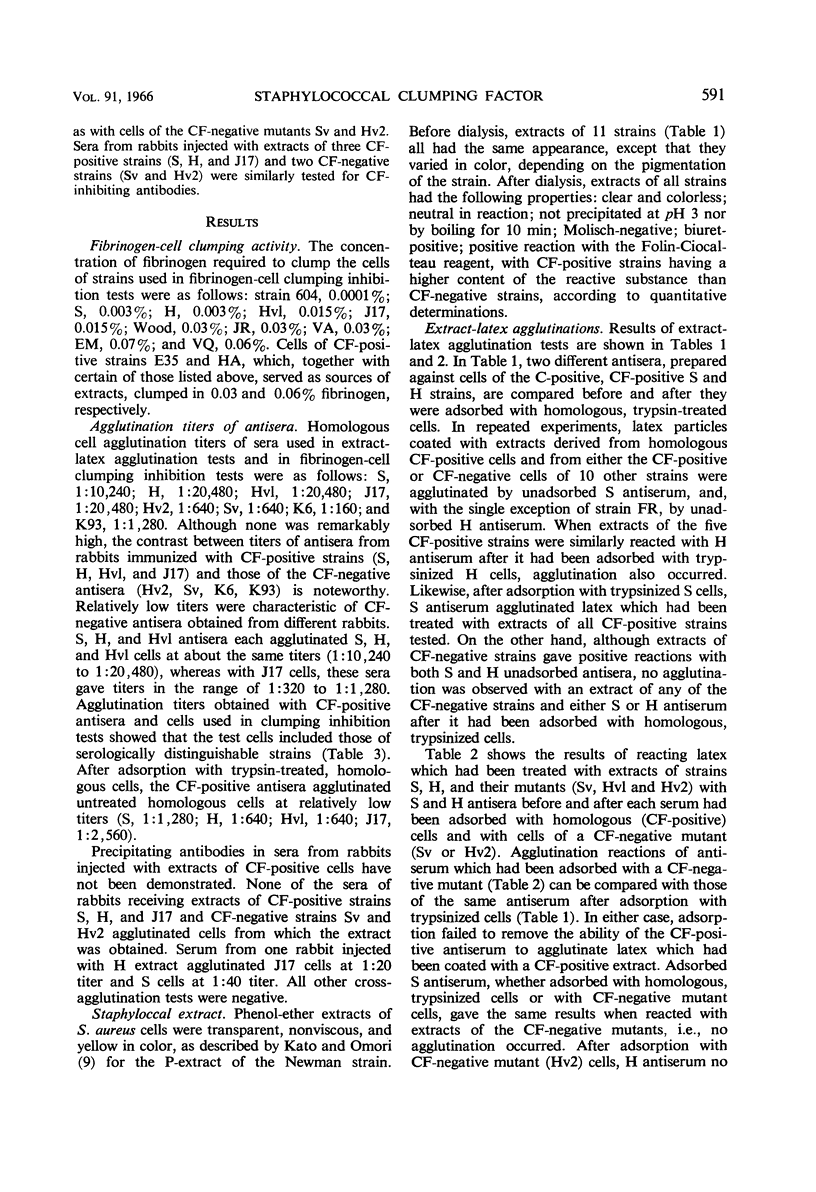
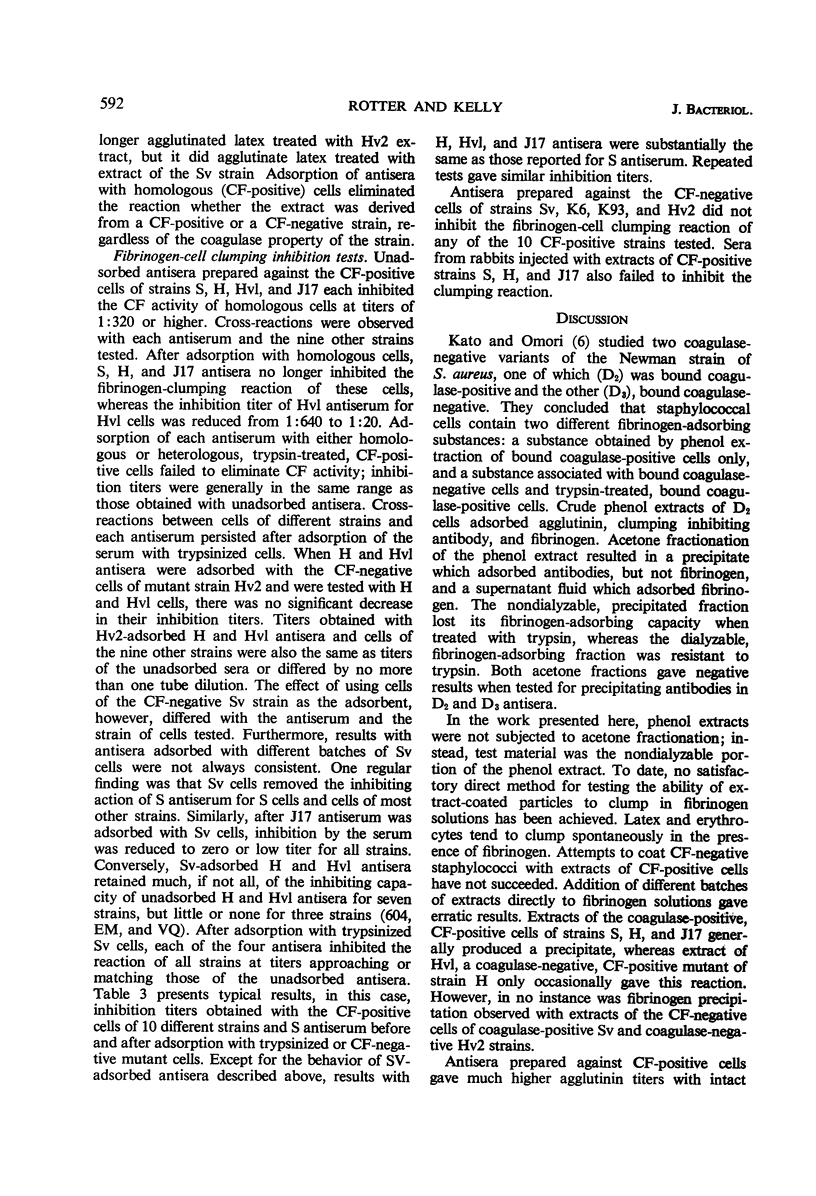
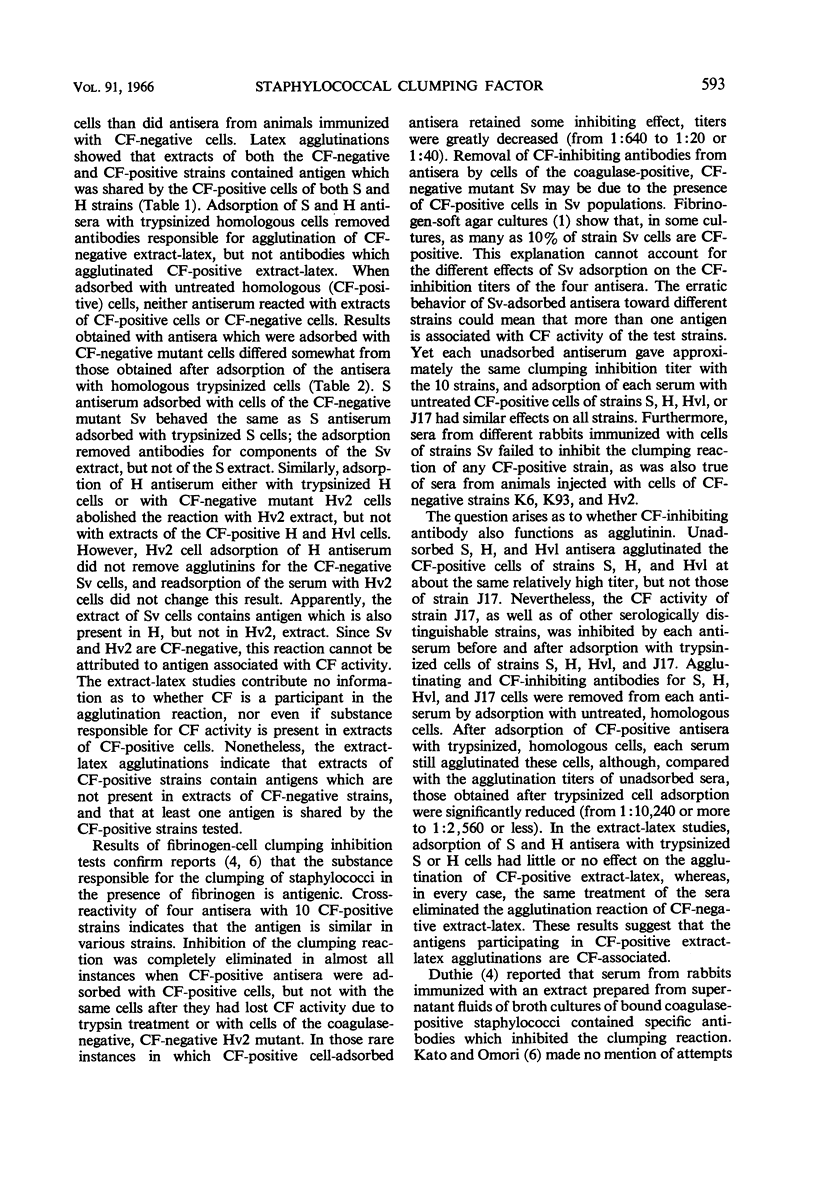
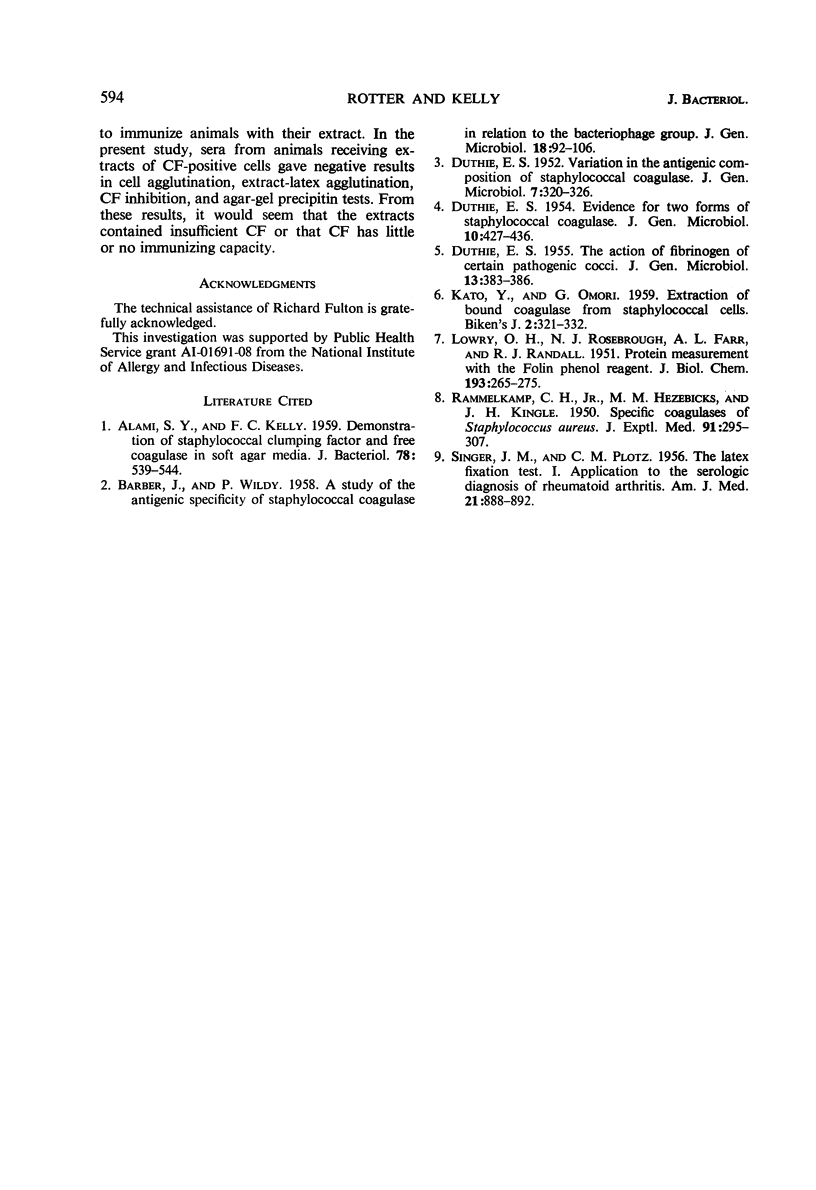
Selected References
These references are in PubMed. This may not be the complete list of references from this article.
- ALAMI S. Y., KELLY F. C. Demonstration of staphylococcal clumping factor and free coagulase in soft agar media. J Bacteriol. 1959 Oct;78:539–544. doi: 10.1128/jb.78.4.539-544.1959. [DOI] [PMC free article] [PubMed] [Google Scholar]
- BARBER M., WILDY P. A study of the antigenic specificity of staphylococcal coagulase in relation to bacteriophage group. J Gen Microbiol. 1958 Feb;18(1):92–106. doi: 10.1099/00221287-18-1-92. [DOI] [PubMed] [Google Scholar]
- DUTHIE E. S. Evidence for two forms of staphylococcal coagulase. J Gen Microbiol. 1954 Jun;10(3):427–436. doi: 10.1099/00221287-10-3-427. [DOI] [PubMed] [Google Scholar]
- DUTHIE E. S. The action of fibrinogen on certain pathogenic cocci. J Gen Microbiol. 1955 Oct;13(2):383–393. doi: 10.1099/00221287-13-2-383. [DOI] [PubMed] [Google Scholar]
- DUTHIE E. S. Variation in the antigenic composition of staphylococcal coagulase. J Gen Microbiol. 1952 Nov;7(3-4):320–326. doi: 10.1099/00221287-7-3-4-320. [DOI] [PubMed] [Google Scholar]
- LOWRY O. H., ROSEBROUGH N. J., FARR A. L., RANDALL R. J. Protein measurement with the Folin phenol reagent. J Biol Chem. 1951 Nov;193(1):265–275. [PubMed] [Google Scholar]
- PLOTZ C. M., SINGER J. M. The latex fixation test. I. Application to the serologic diagnosis of rheumatoid arthritis. Am J Med. 1956 Dec;21(6):888–892. [PubMed] [Google Scholar]


